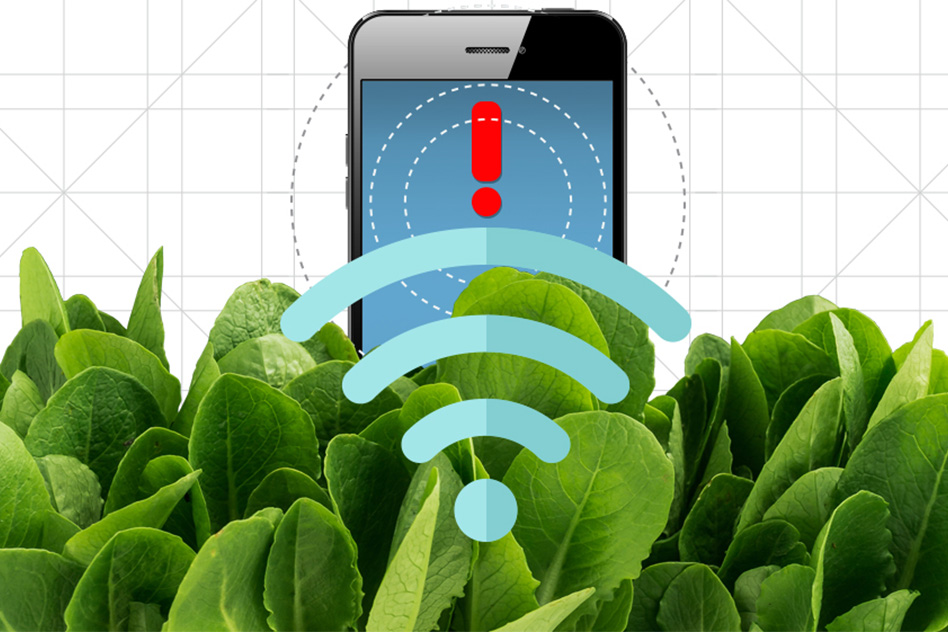‘Nanobionic’ spinach plants detect explosives, pollution, drought
November 2, 2016

By embedding spinach leaves with carbon nanotubes, MIT engineers have transformed spinach plants into sensors that can detect explosives and wirelessly relay that information to a handheld device similar to a smartphone. (credit: Christine Daniloff/MIT)
MIT engineers have implanted spinach leaves with carbon nanotubes, resulting in a hybrid electronic system that they call “plant nanobionics” for detecting dangerous (and other) chemicals.
Two years ago, in the first demonstration of plant nanobionics, MIT engineer Michael Strano, PhD, used nanoparticles to enhance plants’ photosynthesis ability and turn them into sensors for nitric oxide, a pollutant produced by combustion.
Detecting trace molecules
In the new study, the researchers embedded the carbon-nanotube sensors for nitroaromatic compounds into the leaves of spinach plants. The plant can detect minute samples of explosives that leech into the groundwater. Carbon nanotubes can also be used as sensors to detect a wide range of molecules, including hydrogen peroxide, the explosive TNT, and the nerve gas sarin.
To read the signal, the researchers shine a laser onto the leaf, prompting the carbon nanotubes in the leaf to emit near-infrared fluorescent light. This can be detected with a small infrared camera connected to a Raspberry Pi, a $35 credit-card-sized computer, which then alerts the user with an email. The fluorescent signal could also be detected with a smartphone by removing the near-infrared filter that most camera phones have, the researchers say.
“You can apply these techniques with any living plant,” says Strano, leader of the MIT research team and the senior author of a paper describing the nanobionic plants in the Oct. 31 issue of Nature Materials. That opens the door to novel ways for plants to pick up signals that tell of environmental pollution, and even drought.
Plants “know that there is going to be a drought long before we do,” he says. “They can detect small changes in the properties of soil and water potential. If we tap into those chemical signaling pathways, there is a wealth of information to access.”
MIT | Plant-to-human communication
Abstract of Nitroaromatic detection and infrared communication from wild-type plants using plant nanobionics
Plant nanobionics aims to embed non-native functions to plants by interfacing them with specifically designed nanoparticles. Here, we demonstrate that living spinach plants (Spinacia oleracea) can be engineered to serve as self-powered pre-concentrators and autosamplers of analytes in ambient groundwater and as infrared communication platforms that can send information to a smartphone. The plants employ a pair of near-infrared fluorescent nanosensors—single-walled carbon nanotubes (SWCNTs) conjugated to the peptide Bombolitin II to recognize nitroaromatics via infrared fluorescent emission, and polyvinyl-alcohol functionalized SWCNTs that act as an invariant reference signal—embedded within the plant leaf mesophyll. As contaminant nitroaromatics are transported up the roots and stem into leaf tissues, they accumulate in the mesophyll, resulting in relative changes in emission intensity. The real-time monitoring of embedded SWCNT sensors also allows residence times in the roots, stems and leaves to be estimated, calculated to be 8.3 min (combined residence times of root and stem) and 1.9 min mm−1leaf, respectively. These results demonstrate the ability of living, wild-type plants to function as chemical monitors of groundwater and communication devices to external electronics at standoff distances.